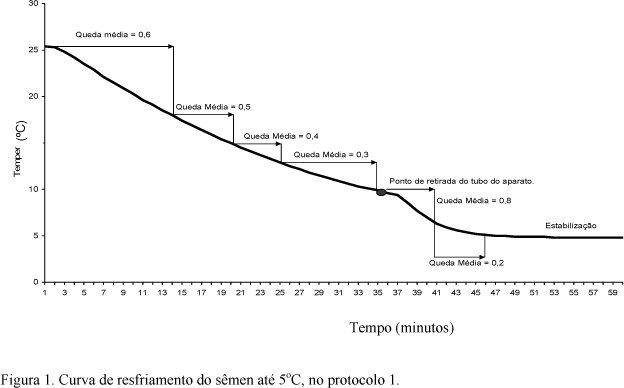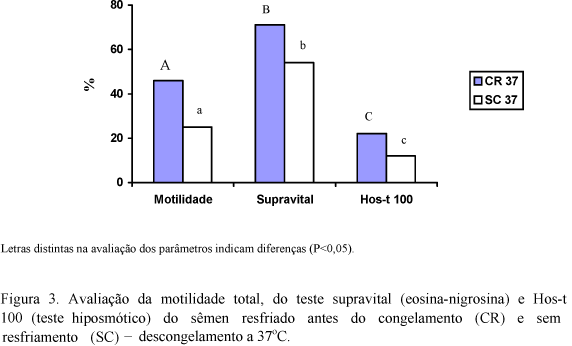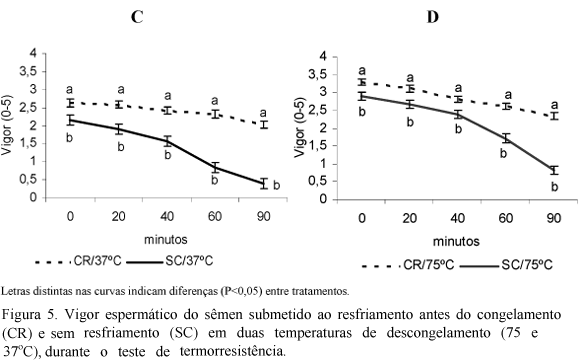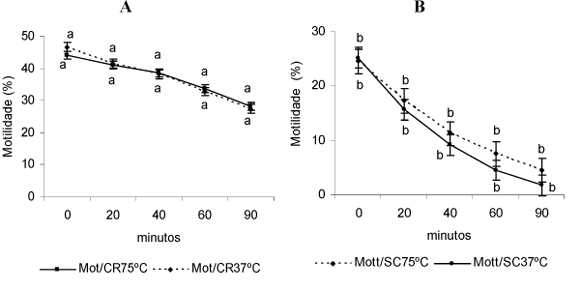Two freezing protocols and two thawing methods were evaluated on 25 ejaculates from five stallions of the Mangalarga Marchador breed. In the first freezing method, semen was cooled to 5ºC before freezing (CR); and in the second, semen at room temperature was frozen directly (SC). The two thawing methods were thawing semen at 37ºC for 30 seconds versus thawing at 75ºC for 7 seconds. Thawed semen was evaluated by the thermal resistance test (TRT- total motility and vigor) and by integrity of sperm membranes (the hypo-osmotic test and the eosine-nigrosine test). Semen that was cooled before freezing had higher (P<0.05) motility immediately post-thaw than semen that was more abruptly frozen (46.7% versus 21.0% for semen thawed at 37ºC and 44.1% versus 24.5% for semen thawed at 75ºC, respectively). At both thawing temperatures, the percentage of live spermatozoa was higher (P<0.05) in CR treatment than in the SC method (71% versus 54.6% for semen thawed at 37ºC and 77.3% versus 54.1% for semen thawed at 75ºC, respectively). The CR treatment also resulted in better hypo-osmotic test results and better semen vigor than did the SC treatment. Semen thawed at 75ºC showed better (P<0.05) vigor than semen thawed at 37ºC, independent of the semen freezing method. In conclusion, there were substantial benefits on subsequent semen quality from cooling of semen before it was frozen.
equine; semen; freezing protocol; thawing protocol; semen quality







